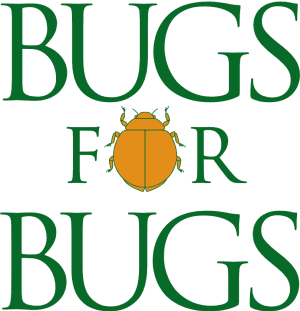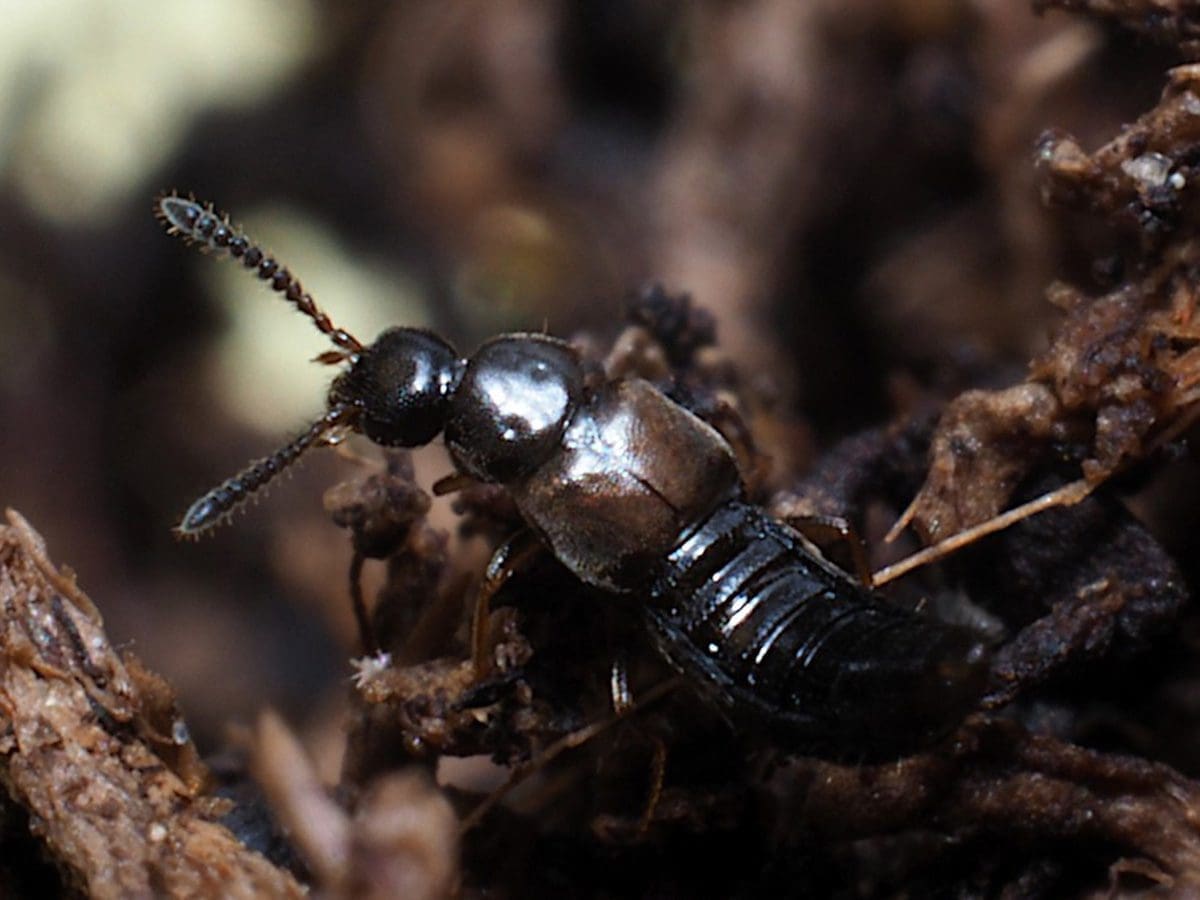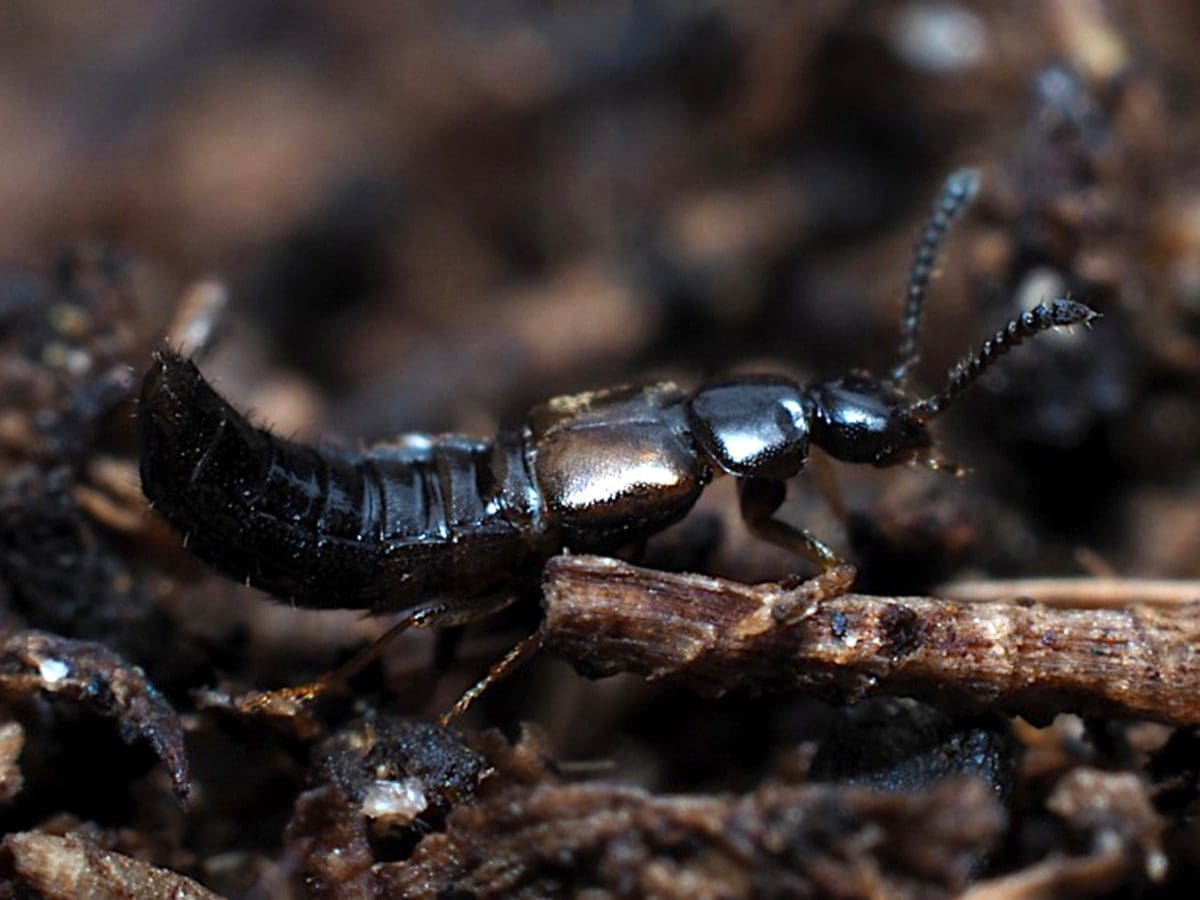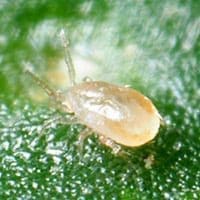Description
Dalotia coriaria are soil-dwelling rove beetles. Both adults and larvae are generalist predators that feed on a wide range of small insects and mites. With a variety of dietary options at their disposal they can establish easily and then quickly react to increasing pest numbers.
These beetles are most commonly used for management of fungus gnats and shore flies. They can provide excellent control of these pests, feeding readily on the egg and larval stages. Dalotia also prey on western flower thrips, root aphids, root mealybugs, moth flies, springtails, carrot flies, cabbage root flies and a variety of other soil-borne pests.
Adult Dalotia are 3-4 mm long slender black/brown beetles with short wing covers. They are capable of flying long distances but spend most of their time searching for food within the growing medium. Both adults and larvae move rapidly in the soil if disturbed. Larvae grow to about 4 mm and change from white to pale brown as they mature. Development time from egg to adult is about 3 weeks at 25°C. Adult beetles can live for over three weeks and consume up to 150 fungus gnat eggs per day.
Download our Dalotia tech sheet
Key target pests
- Fungus gnats
- Shore flies
- Western flower thrips
- Root aphids
- Root mealybugs
Advantages
- All stages extremely voracious
- Easy to release
- Rapid distribution and establishment in the crop
- Broad range of target pests
- Ideal for use with our Hypoaspis predatory mites
Suitable crop environments
Dalotia can be used in both indoor and outdoor crops. They are commonly used in nurseries and cannabis as well as a range of vegetables and ornamentals. They establish well in a variety of growing media including soil, compost, potting mixes, coconut coir and rock wool.
Dalotia thrive in a warm humid environment with optimum development occurring at 25-27°C. They continue to reproduce at lower temperatures, but are less likely to lay eggs once the average temperature falls below 10°C.
These beetles are better able to tolerate a waterlogged environment than other soil-dwelling predators such as Hypoaspis mites. Dalotia are therefore particularly useful in situations where the growing medium is often saturated or where puddles occur in the growing area.
Storage and handling
Dalotia are supplied in packs of 1,000 individuals (a mix of all life stages). They are packed in cardboard tubs with sawdust. These beetles should be released as soon as possible after delivery, unless temperatures are extreme. If necessary, tubes can be stored (on their side) for up to 3 days at 8-12°C.
Release rates
Release rates will vary depending on the crop and level of infestation. The table below is only a guide – contact us for specific recommendations.
| Situation | Rate (per release) | No. of releases | Interval between releases |
| Preventative | 2 – 5 beetles/m2 | 2 | 1-2 weeks |
| Curative
(hotspot treatment) |
10 beetles/m2 | as required | 1 week |
Unlike chemicals, when it comes to beneficials, more is always better. However, they are costly to produce and our goal is to achieve the best results at minimal expense. There are many factors to consider, including the value of the crop, the severity of the pest outbreak and the activity (or otherwise) of naturally occurring beneficial species.
As a general rule, multiple releases of modest numbers is better than a single large release. This reduces risk, improves establishment and accelerates the development of multiple overlapping generations. In most cases our releases are inoculative and we anticipate that our beneficials will establish and breed up within the crop to give extended protection.
When to release
Dalotia are suitable for both preventative and curative release. However, for best results we recommend repeated introductions early in the crop cycle when pest numbers are still low. If treating cabbage root flies or carrot flies, Dalotia can be applied to seedling trays prior to planting in the field.
How to release
Before release, check prior history of chemical applications to ensure toxic residues are no longer present. See notes on chemical use below.
Adult beetles are active fliers, so avoid opening the tube until you enter the crop. Roll each tube gently to ensure that the contents are well mixed immediately prior to release. Dalotia should be applied in small piles, directly onto the surface of the growing medium. They may also be applied to the floor of the greenhouse or growing area if it provides suitable conditions for fungus gnats and other pests to breed.
Adult Dalotia disperse readily so it is not always necessary to treat the entire growing area. If curative treatments are required, we recommend regular releases at high rates into pest hotspots.
Monitoring after release
It may be difficult to find Dalotia after they have been introduced into the crop. They are highly mobile and will quickly disperse and seek shelter within the growing medium. A variety of monitoring methods can provide an indication of pest and predator population trends over time.
Adults can sometimes be seen walking or running on the the growing medium. They may also show up on yellow sticky traps used to mass trap or monitor adult populations of fungus gnats, thrips and other flying pests. Dalotia larvae can be monitored using the potato test. Simply place slices of raw potato cut-side down onto the growing medium. The potato slices will attract both Dalotia larvae and fungus gnat larvae.
Cultural practices to aid establishment
Dalotia are most effective when incorporated into an IPM program. They are very robust and can cope with a wide range of conditions. They can tolerate a waterlogged environment, however they do perform better when the growing medium is not constantly saturated.
Breeding boxes have potential to enhance establishment and performance of this predator in hydroponic crops. This approach is utilised in ornamentals and floriculture overseas but has not yet been widely adopted in Australia.
Complementary biocontrol options
Dalotia work very well in combination with a variety of other biocontrol agents. They complement the activity of Hypoaspis mites deployed to control fungus gnats, shore flies and thrips. For treatment of thrips we combine these soil-dwelling predators with species that are active within the foliage such as Orius predatory bugs and Montdorensis or Cucumeris predatory mites.
For management of root aphid we recommend combining Dalotia with Hypoaspis and Lacewings.
Chemical use
Pesticide residues may slow or prevent the establishment of Dalotia. Some insecticides (e.g. synthetic pyrethroids, organophosphates and neonicotinoids) can have residual toxicity for many weeks.
If pesticides are required, always check for side-effects and select products that are least harmful to Dalotia and other key beneficials in your IPM program.




 See disclaimer
See disclaimer




Reviews
There are no reviews yet.